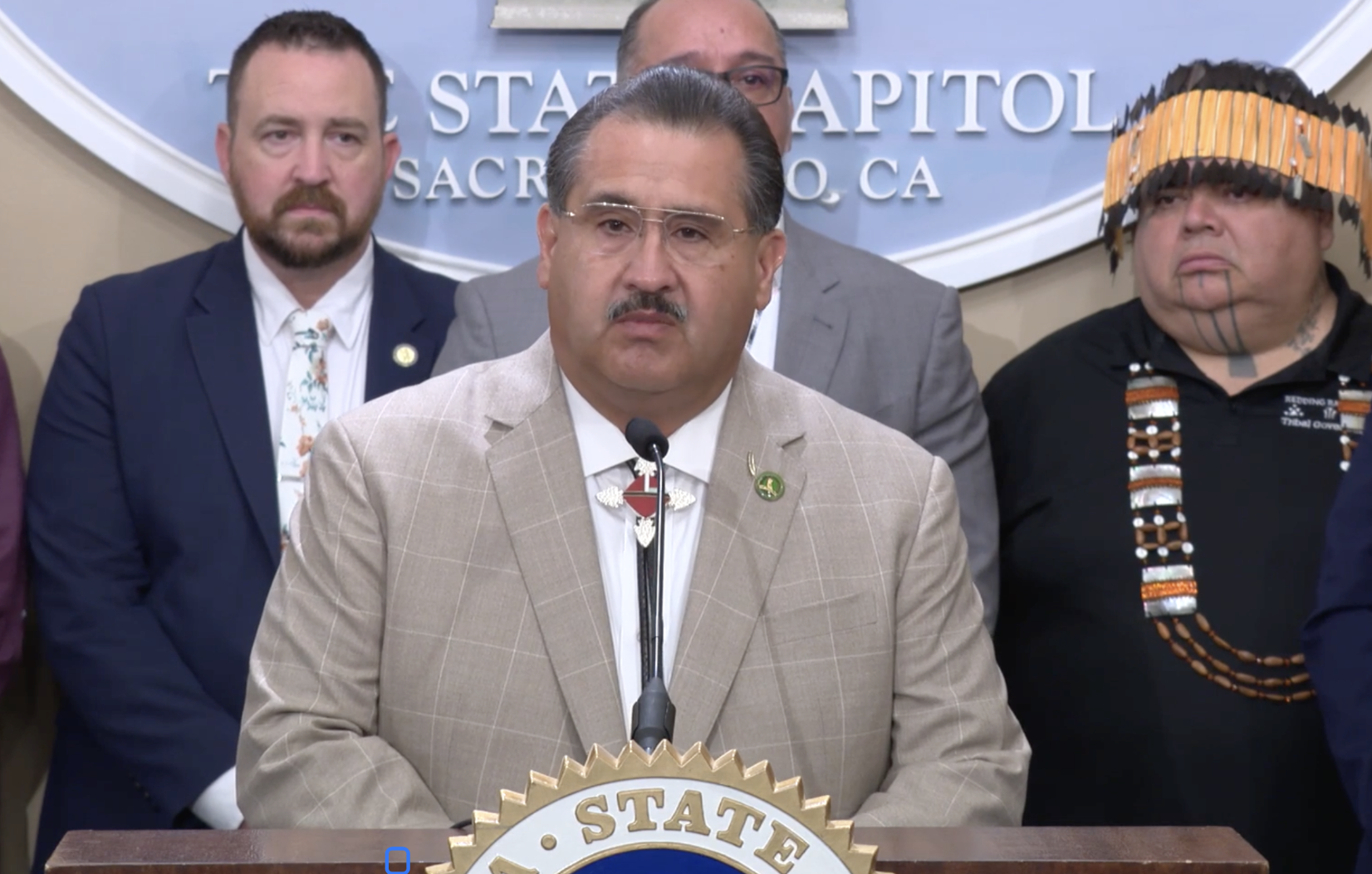
- Details
- By Native News Online Staff
On Tuesday, California assembly member James Ramos held a news briefing ahead of an oversight Committee hearing by the Select Committee on Native American Affairs and the Joint Committee on Legislative Audit.
The oversight hearing is a result of a bill Ramos passed last year, which, among other mandates, requires California State University to submit an annual report on its repatriation progress by the end of this year.
“[That] is why we are holding an oversight hearing today and annually thereafter,” Ramos said in a press briefing today. “We will continue to monitor and press for an end to this shameful, decades-long delay of remains back to our ancestors.”
California’s state auditor has conducted three audits: a UC audit in 2019, a second UC review in 2021, and a CSU survey and report in 2022. The CSU audit in 2022 revealed the university system held a collection of more than 700,000 Native American ancestors in its possession.
A similar audit of the University of California system, published in June 2020, identified a sample of at least 500,000 Native American human remains in the university’s possession. The audit included recommendations for the state’s universities, its legislature, and the California Native American Heritage Commission.
The process of repatriating human ancestors has been ongoing under Ramos’ leadership, as well as a complete overhaul of the federal law that requires universities and agencies to return Native American human remains and their artifacts. In May 2023, California State University Fullerton began the process of returning more than 200 Native ancestors.
Charles Martin, Chairman of Morongo Band of Mission Indians, said on Tuesday that working with California universities to return Native ancestors is going to take a lot of work, but its results will benefit tribal nations across the United States.
“We’ve made a lot of progress, but there is still much work to be done,” he said. “We come today with the hopes that we can come to real solutions in terms of working with the UCs. This is something that exists in each state where there are tribal communities, and folks want to return the remains of their ancestors back to a final resting home.”
The discussion from the oversight committee hearing has not yet been published as of Tuesday evening EST.
More Stories Like This
50 Years of Self-Determination: How a Landmark Act Empowered Tribal Sovereignty and Transformed Federal-Tribal RelationsNavajo Nation President Nygren Files in Court to Halt Removal Legislation
Alcatraz Sunrise Gathering Marks 50 Years of Indigenous Activism
Navajo Nation Vice President Distances Herself From President After Removal Resolution
Navajo Council Speaker Introduces Legislation to Remove Navajo Nation President, Vice President Amid Ethics Complaint
Help us tell the stories that could save Native languages and food traditions
At a critical moment for Indian Country, Native News Online is embarking on our most ambitious reporting project yet: "Cultivating Culture," a three-year investigation into two forces shaping Native community survival—food sovereignty and language revitalization.
The devastating impact of COVID-19 accelerated the loss of Native elders and with them, irreplaceable cultural knowledge. Yet across tribal communities, innovative leaders are fighting back, reclaiming traditional food systems and breathing new life into Native languages. These aren't just cultural preservation efforts—they're powerful pathways to community health, healing, and resilience.
Our dedicated reporting team will spend three years documenting these stories through on-the-ground reporting in 18 tribal communities, producing over 200 in-depth stories, 18 podcast episodes, and multimedia content that amplifies Indigenous voices. We'll show policymakers, funders, and allies how cultural restoration directly impacts physical and mental wellness while celebrating successful models of sovereignty and self-determination.
This isn't corporate media parachuting into Indian Country for a quick story. This is sustained, relationship-based journalism by Native reporters who understand these communities. It's "Warrior Journalism"—fearless reporting that serves the 5.5 million readers who depend on us for news that mainstream media often ignores.
We need your help right now. While we've secured partial funding, we're still $450,000 short of our three-year budget. Our immediate goal is $25,000 this month to keep this critical work moving forward—funding reporter salaries, travel to remote communities, photography, and the deep reporting these stories deserve.
Every dollar directly supports Indigenous journalists telling Indigenous stories. Whether it's $5 or $50, your contribution ensures these vital narratives of resilience, innovation, and hope don't disappear into silence.
 The stakes couldn't be higher. Native languages are being lost at an alarming rate. Food insecurity plagues many tribal communities. But solutions are emerging, and these stories need to be told.
The stakes couldn't be higher. Native languages are being lost at an alarming rate. Food insecurity plagues many tribal communities. But solutions are emerging, and these stories need to be told.
Support independent Native journalism. Fund the stories that matter.
Levi Rickert (Potawatomi), Editor & Publisher

